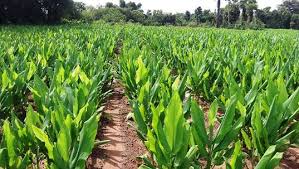Turmeric, a bright yellow spice derived from the root of the Curcuma longa plant, has gained immense popularity in Kenya over the past few years. Once primarily recognized for its use in Asian and Indian cuisines, turmeric has now made its way into Kenyan kitchens and medicine cabinets, thanks to its wide array of health benefits, including anti-inflammatory and antioxidant properties. This rising demand is creating new opportunities for Kenyan farmers, especially in the coastal and semi-arid regions.
Where Is Turmeric Grown in Kenya?
Turmeric farming is primarily concentrated in the coastal counties of Kenya, including Kilifi, Kwale, Lamu, and Taita Taveta, where the climate and soil conditions are favorable for the crop. It is also grown in other parts of the country such as Kitui and Makueni, which have adapted the cultivation practices to suit the semi-arid conditions.
Varieties of Turmeric Grown in Kenya
Kenyan farmers cultivate several varieties of turmeric, each with its unique flavor, color, and curcumin content (the active ingredient responsible for its medicinal properties):
- Madras
- Alleppey Finger
- Rajapuri
- Erode
- Salem
- Lakadong
- Suguna
- Ranga
Each variety has different characteristics, with the Alleppey Finger and Lakadong being particularly prized for their high curcumin content, which makes them highly sought after in both local and international markets.
Ecological Requirements for Turmeric Farming
Turmeric requires specific climatic and soil conditions to thrive. In Kenya, it grows best in areas with:
- Annual rainfall of at least 1,500mm.
- Altitude between 0 and 1,500m above sea level.
- Temperature range of 20°C to 35°C.
- Soil that is well-drained, with a pH between 5.5 and 7.5. The ideal soil type is sandy loamy soil, rich in organic matter.
Land Preparation
Land preparation is crucial for a successful turmeric crop. Farmers are advised to plough the land to a fine tilth, ensuring a depth of 35 to 40 cm. Adding well-decomposed organic manure is essential for enriching the soil. Around 15 tonnes of manure per acre is recommended.
Raised beds, which should be 15 cm wide, are prepared for planting. The spacing between the beds should be approximately 50 cm to allow for healthy plant growth and easy maintenance.
Planting Turmeric
Turmeric is propagated using rhizomes, which are underground stems. The rhizomes are cut into small, healthy, disease-free pieces and planted in rows, with an ideal spacing of 20 cm between plants.
Fertilizers rich in potassium, phosphorus, and nitrogen are applied to boost plant development. Additionally, farmers are advised to use organic farming methods where possible, as this increases the market value of their turmeric, especially in health-conscious markets.
Common Pests and Diseases
Like many crops, turmeric is susceptible to various pests and diseases that can affect yield if not properly managed. Pests such as aphids, mites, shoot borers, leaf rollers, and caterpillars are common. Diseases like leaf spot, leaf blotch, root rot, and rhizome rot can also damage the crop.
To mitigate these risks, farmers use appropriate pesticides and fungicides, while also adopting integrated pest management techniques, such as crop rotation and biological pest control.
Harvesting Turmeric
Turmeric takes about eight months to mature. Farmers know it’s ready for harvest when the plant’s leaves and stems turn yellow or start drying up. Once harvested, the rhizomes are carefully dug up and can either be sold fresh or dried and ground into powder for sale.
On average, an acre of well-managed turmeric can yield up to 8,000 kg. With proper post-harvest handling, including curing and polishing, turmeric farmers can maximize the quality and price of their produce.
The Market for Turmeric in Kenya
The market for turmeric in Kenya has been expanding rapidly. With increasing awareness of its health benefits, demand for the spice has surged in local markets, grocery stores, and supermarkets. Turmeric is also used in various industries, including food, cosmetics, and traditional medicine.
A kilogram of turmeric can fetch up to Ksh 500, depending on its quality and the current demand. As more Kenyans incorporate turmeric into their diets and wellness routines, the crop’s profitability continues to rise. Additionally, there is growing interest in exporting Kenyan-grown turmeric to international markets, where organic and sustainably farmed spices are in high demand.
Challenges and Opportunities
Despite the growing demand and profitability of turmeric, Kenyan farmers face several challenges, including:
- Limited access to high-quality planting material.
- Lack of sufficient knowledge about modern turmeric farming practices.
- Pest and disease control issues.
However, these challenges present opportunities for growth, especially with increased support from agricultural extension services and initiatives promoting organic farming. Additionally, farmers can tap into niche markets such as organic and fair-trade certifications, which command higher prices both locally and internationally.
Turmeric farming in Kenya offers a lucrative opportunity for farmers, particularly those in coastal and semi-arid regions. With growing domestic demand and the potential for export, turmeric is becoming a high-value crop that can significantly improve farmers’ incomes. By adopting best farming practices, such as using organic fertilizers, controlling pests and diseases, and exploring new market channels, Kenyan turmeric farmers can continue to thrive in this dynamic industry.





